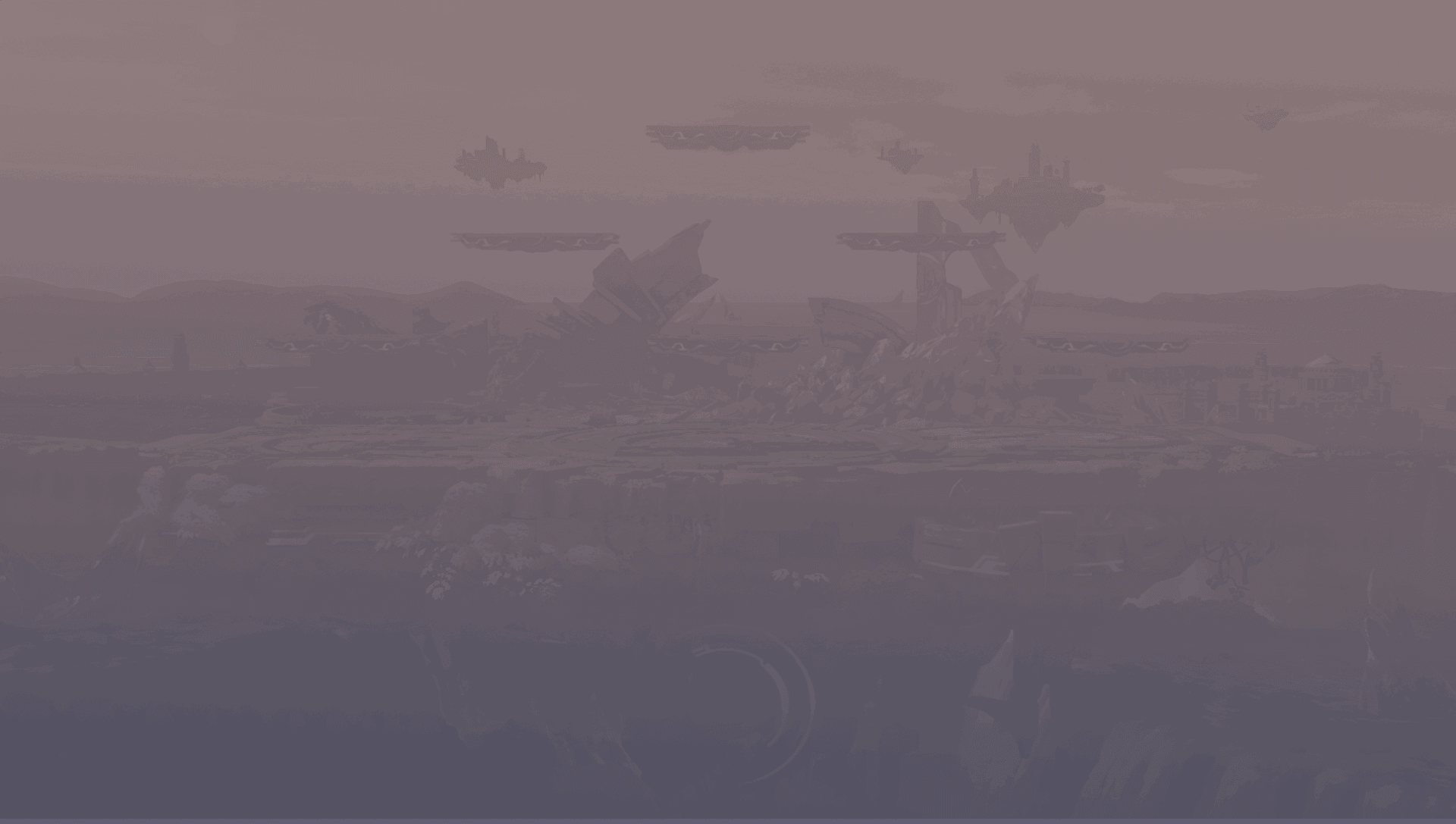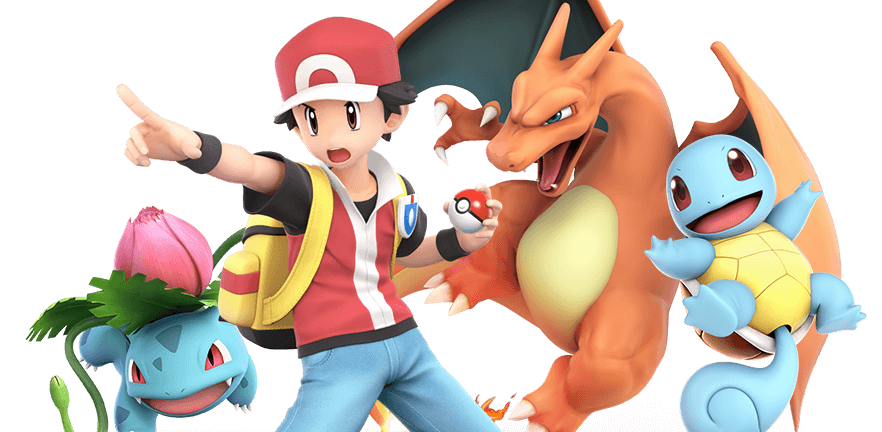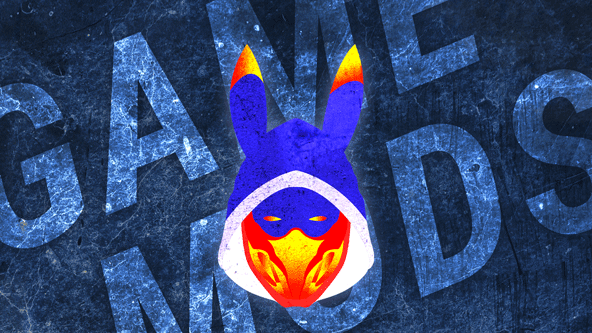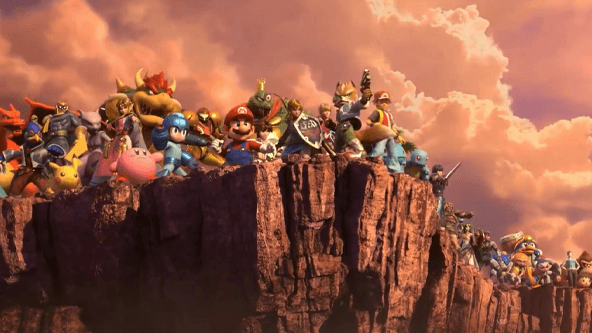Win rate
39%(66-103)
Pick rate
1%
Total players
169

Start learning movesets and combos!


Pokémon Trainer is a unique Smash character — you have three fighters with pretty different abilities: Squirtle, Ivysaur, and Charizard. Smash players can swap Pokémon during the fight, using their advantages in various situations. Pokémon Trainer is versatile but difficult to master.Know more
Get notified of the character’s updates
Win rate
39%(66-103)
Pick rate
1%
Total players
169
The chart shows this character's most frequent matchups, and also the most favorable ones based on win rate.
Win rate
Matchups based on at least on 50 games.
Most played vs:

Wins-losses:
Best vs:

Wins-losses:
Worst vs:

Wins-losses:
| Player | Games | Wins | Losses | Win rate |
|---|---|---|---|---|
| 7 | 0 | 7 | 0% | |
| 4 | 2 | 2 | 50% | |
| 2 | 0 | 2 | 0% |
Survivability: 5
Range: 5
Specials: 6
Speed: 7
Aerials: 7


If a kid from this gaming universe decides to become a Pokémon trainer, they leave their home and start a breathtaking journey. During this game adventure, the hero (or rather the player) looks for wild Pokémon to battle them and add them to their team.
The core Pokémon RPGs follow this pattern. They have an exploration layer — players visit different locations to unravel the story and to find new Pokémon species. Also, the games have a collecting layer (you know, “gotta catch ‘em all”) and naturally a deep battling part.
Pokémon are very interesting creatures. They can evolve after getting a specific amount of experience (XP). They transform into a stronger version of themselves to be more successful in fights. It’s also a way to add a new entry into your Pokédex. For example, Pichu can evolve into Pikachu.
The very first kid who started their “career” as a Pokémon trainer is from the Kanto region (the game Pokémon Red/Blue). They left their home (as it should be) and went to a laboratory of Professor Oak — to select their starter Pokémon. It’s a necessary step because you need to have at least one creature to battle others and expand your collection.
That original Pokémon trainer could choose one of three species: Squirtle (Water-type), Bulbasaur (Grass-type), or Charmander (Fire-type). Battles with other creatures start right outside the laboratory — you just need to enter the tall grass. And if you keep taking your starter Pokémon to the battles again and again, they will gather enough experience to eventually evolve.
Here are the evolution chains for three starter Pokémon from Generation I:
Higher evolution forms give Pokémon better stats and even open fresh attacks or interesting moves. In the original games, there is almost no reason to avoid evolution. Some players might want to keep this unevolved form in their collection. Or someone just loves this specific Pokémon (oh, Charmander is such a cutie). Otherwise, the destiny of all the starters is to reach their most powerful versions.
These three Gen I starters have become pretty popular among the Pokémon players. They are still available in many core games (sometimes through trades), so you can bring that Water/Grass/Fire power into your team. The upper evolutions are even present in competitive Pokémon tournaments — they are really good at fights.
In addition, all the evolutions are present in the anime, which is meant to demonstrate the wonders of the Pokémon world. Spin-off games also have the Gen I iconic trio. Blastoise and Charizard are fighters in the game Pokkén Tournament.
The whole Pokémon franchise is a perfect source of fighters for Smash. You remove the exploration and collectible aspects and have pure battles. They are turn-based in the original RPGs and can’t be compared to the fast-paced action of Smash matches, but the characters themselves are totally suitable to be transferred into the fighting environment.
Pokémon Trainer is a unique member of the SSB roster. This is a guy or a girl that has three Pokémon in their team and brings these creatures to the battle. You control that hero from the original games, by they do not fight directly but give commands to their Pokémon.
Actual fighters are:
Not only did the game developers bring three different types of Pokémon into Smash, but also they added three different evolution levels, opening impressive strategy options.
Pokémon Trainer is available as a playable character only in two Smash games: Brawl and Ultimate.
Technical limitations of the Nintendo 3DS system did not allow having Pokémon Trainer in SSB 4. Players have only one Charizard instead.
In Super Smash Bros. Brawl, Pokémon Trainer is one of the worst characters in the roster. The system of changing Pokémon is laggy and causes the vulnerability. The general abilities of Pokémon have lots of disadvantages.
For this game, the developers significantly improved Pokémon Trainer. The fighter is pretty versatile thanks to the different abilities of the three Pokémon, so players have proper “weapons” for different matchups and situations. On the other hand, though, you have to learn how to play not one character but three, and that’s a demanding process.
At any given moment, there is only one Pokémon on the fighting ground (unlike with Rosalina & Luma, Banjo & Kazooie, Ice Climbers, or Duck Hunt). But you can swap the creatures (Down Special) and summon the next Pokémon in line. This quite advanced mechanic has the disadvantage of working only in one direction — Squirtle -> Ivysaur -> Charizard -> Squirtle. As a result, you might be unable to call that specific Pokémon you need right now. The countdown between swapping makes the situation even more complicated.
Squirtle is a lightweight character with high speed and nice combos, but the creature doesn't have proper KO options and good endurance. Ivysaur is still quite fast, but attacks of this Pokémon are a bit stronger. Charizard can easily KO opponents, has a very good recovery option, and moves quickly. Still, the attacks of this fire dragon are easily punishable.
It is recommended to start fights with Squirtle and thus deal basic damage. Ivysaur is a zoner, so switch to this fighter as a mid link to create distance and deepen the damage. Then choose Charizard to finish the process. The scheme works in theory, but Smash matches are rarely that straightforward.
To play Pokémon Trainer effectively, be ready to invest significant effort in learning and practice. You need to master three different archetypes, and that’s not an easy task at all.
The virtual human who controls Pokémon can be a boy (from Pokémon Red) or a girl (from Pokémon GreenLeaf).